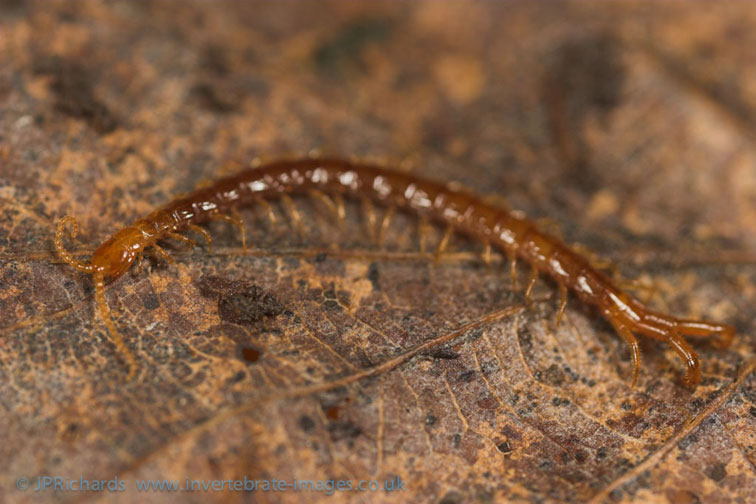Cryptops hortensis (Donovan, 1810)
Common name
Status:
GB IUCN status: Least Concern
ID Difficulty
Identification
The genus Cryptops is readily recognisable due to the presence of 21 leg pairs (all other British and Irish centipedes have 15 pairs or at least 35 pairs). However species identification is difficult.
Cryptops hortensis is the smallest of the three 'outdoor' Cryptops in Britain, typically around 20 mm in body length (only rarely reaching 30 mm). It is easily confused with immature specimens of the larger C. anomalans and C. parisi. However, C. hortensis can be readily distinguished from all known species of Cryptops by the presence of a deep groove on the underside of the prefemur (see image). Examination of the tibial and tarsal saw teeth of the last legs (which comprise widely spaced teeth in C.hortensis) will also differentiate this species.
More information to allow accurate identification is given in the published identification keys by Tony Barber (2008 & 2009).
Distribution
Cryptops hortensis is common across much of England and Wales, but becomes increasingly scarce and coastal in northern England and Scotland. In Ireland it is widely recorded, but most frequent in southern-most areas.
Habitat
It favours urban areas, but this includes woodland, in addition to parks, gardens and churchyards. It is usually found beneath stones and dead wood, but also among human rubbish.
This account is based on the 'Centipede Atlas' (Barber, 2022).
Links
ChiloBase 2.0 - World Catalogue of Centipedes: https://chilobase.biologia.unipd.it/searches/result_species/469








